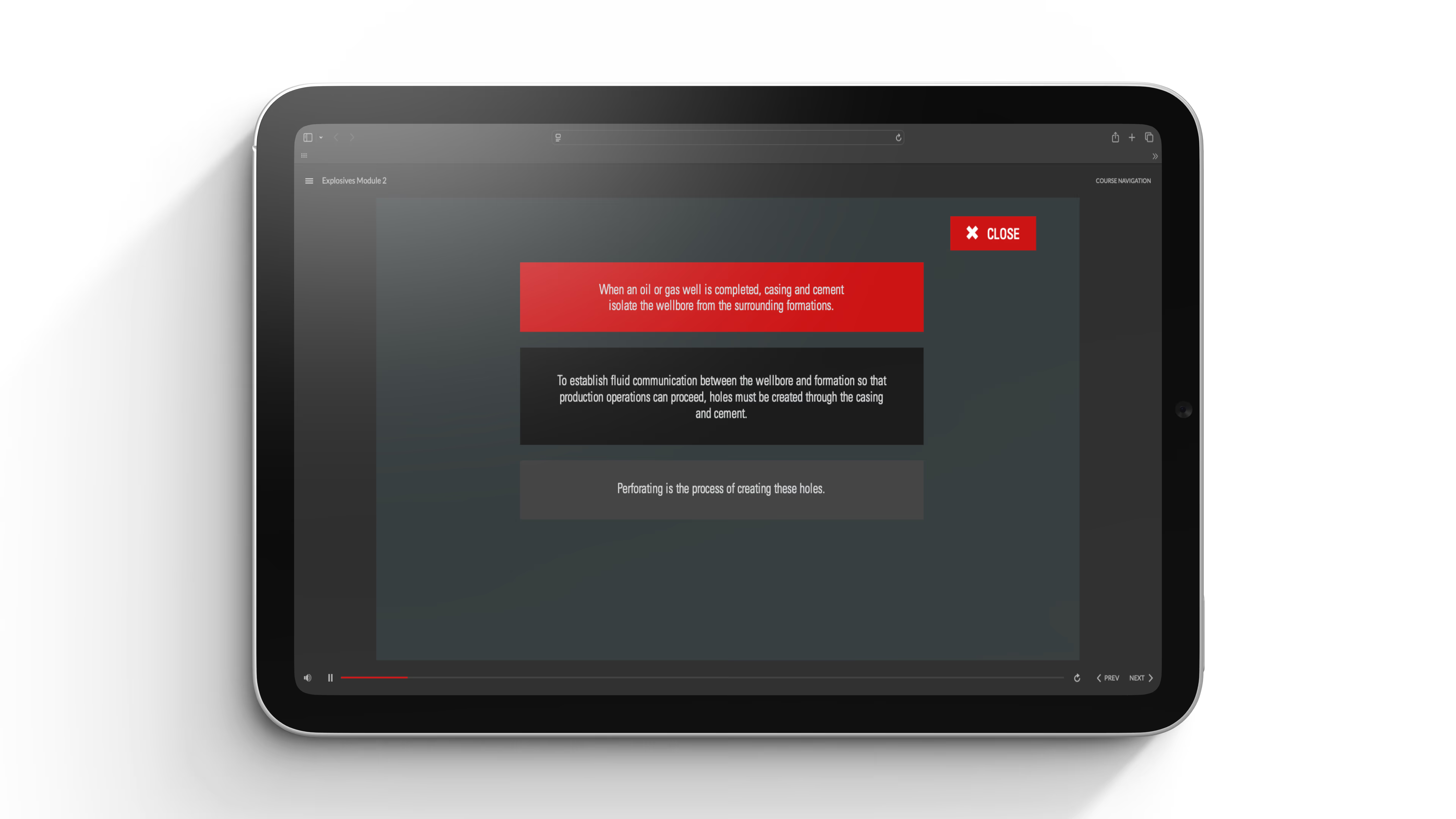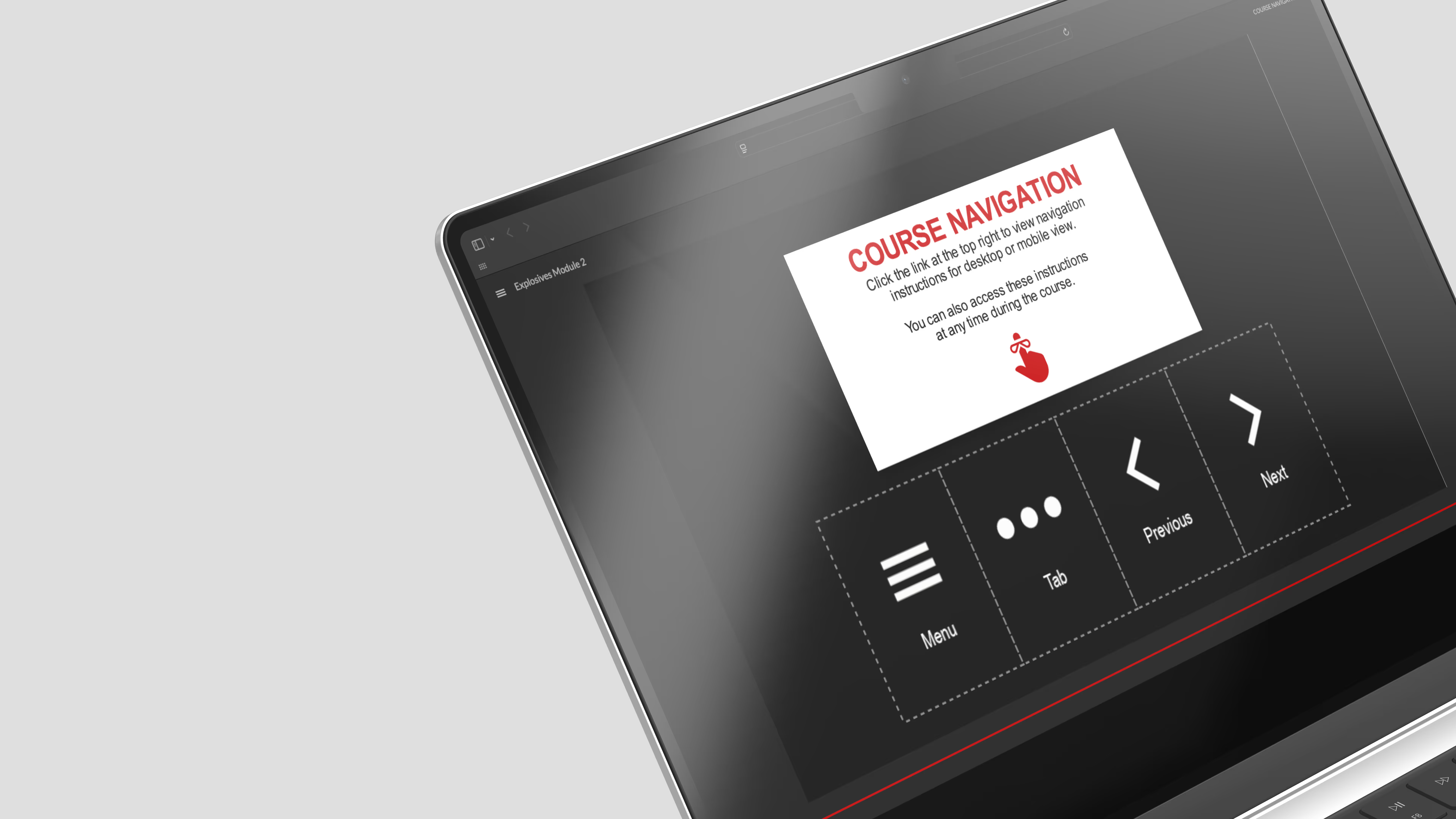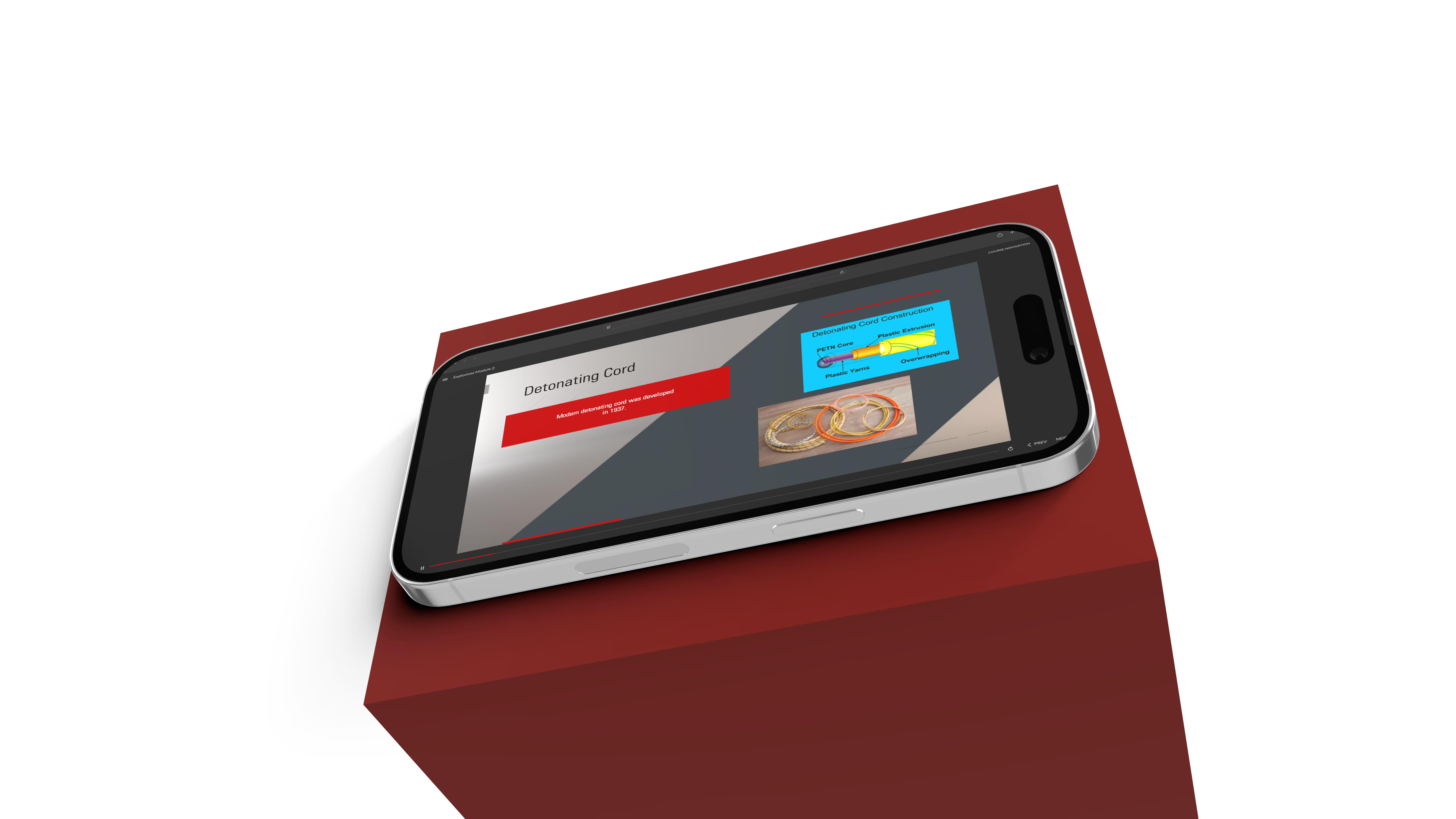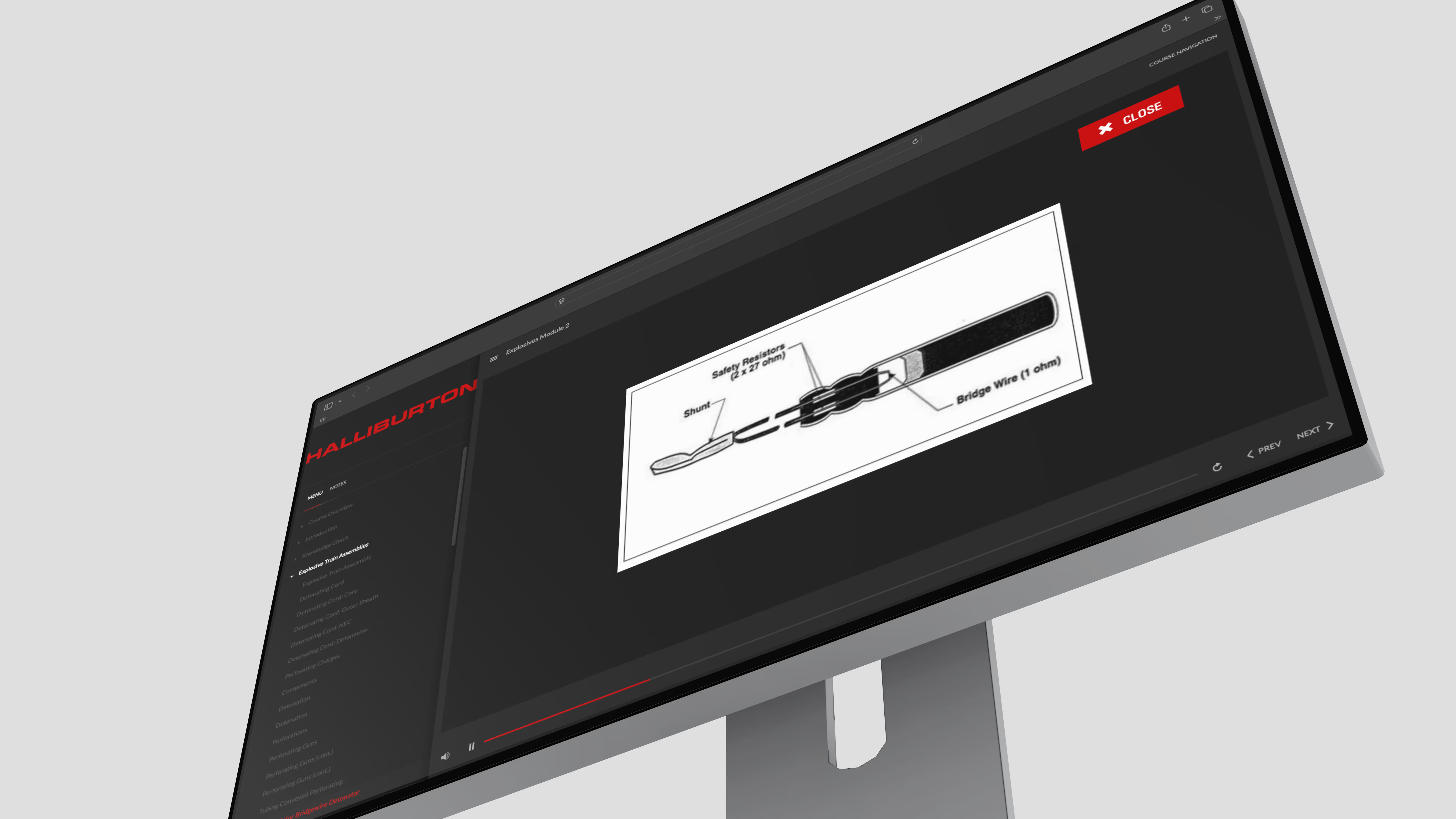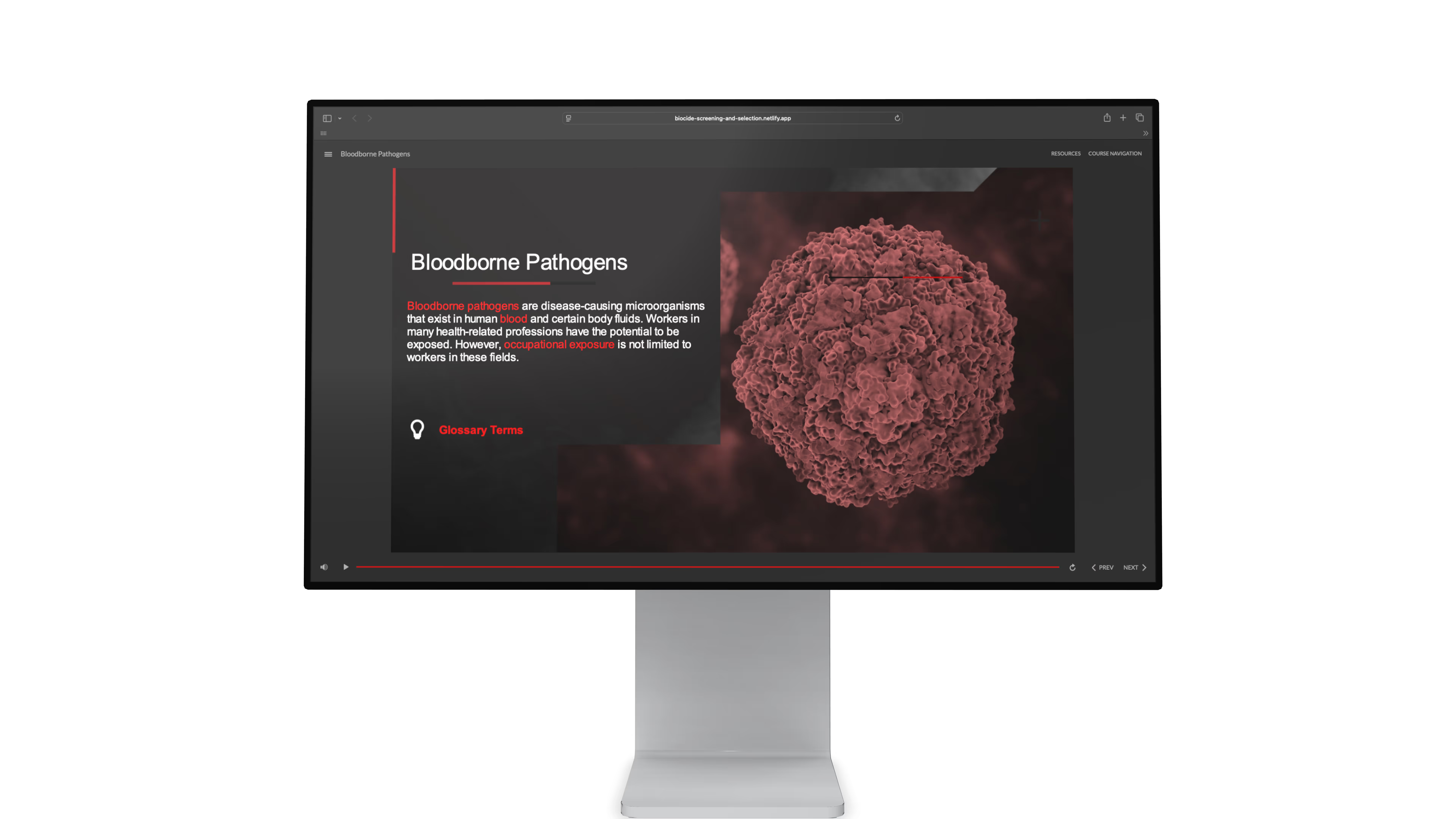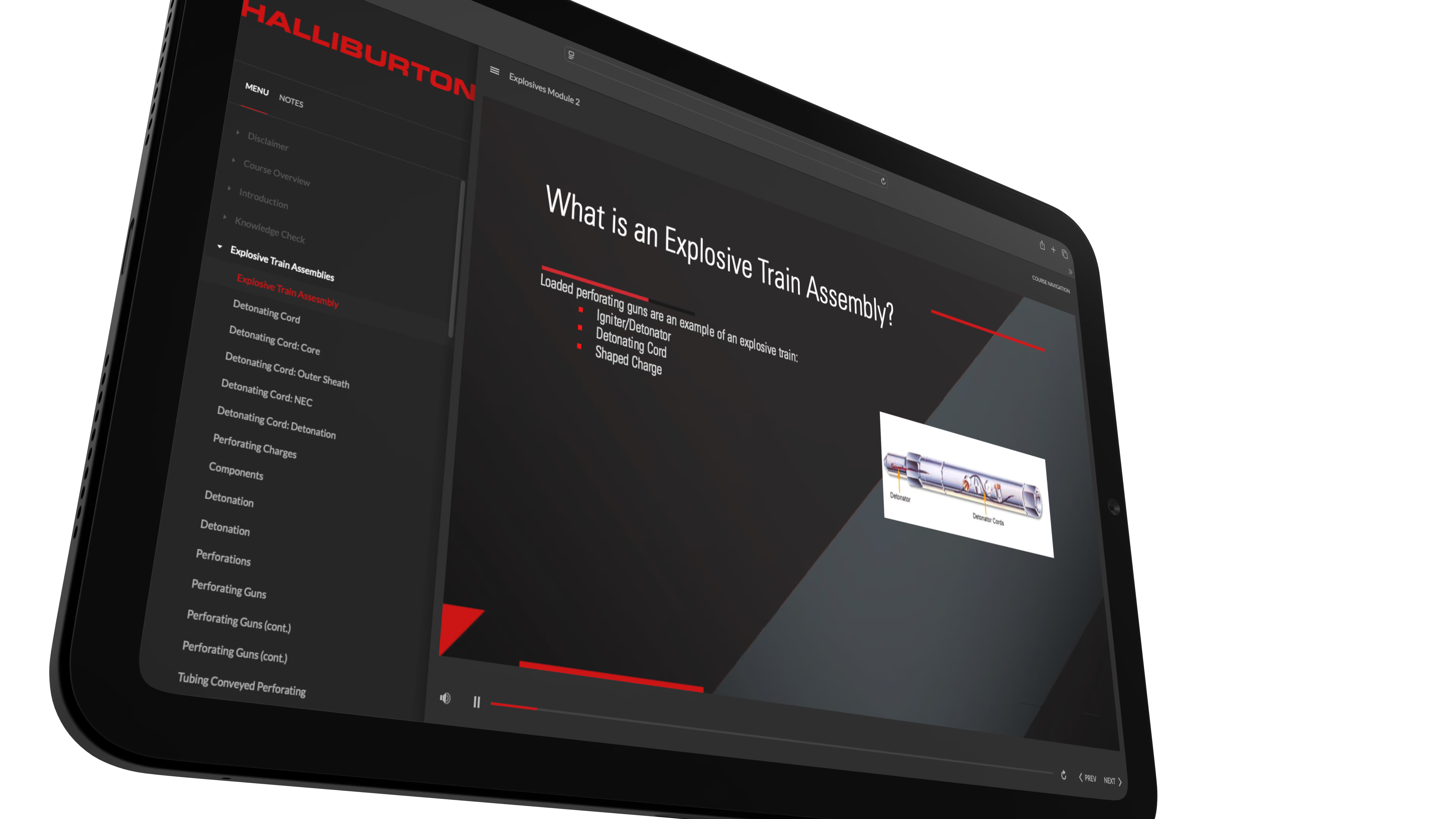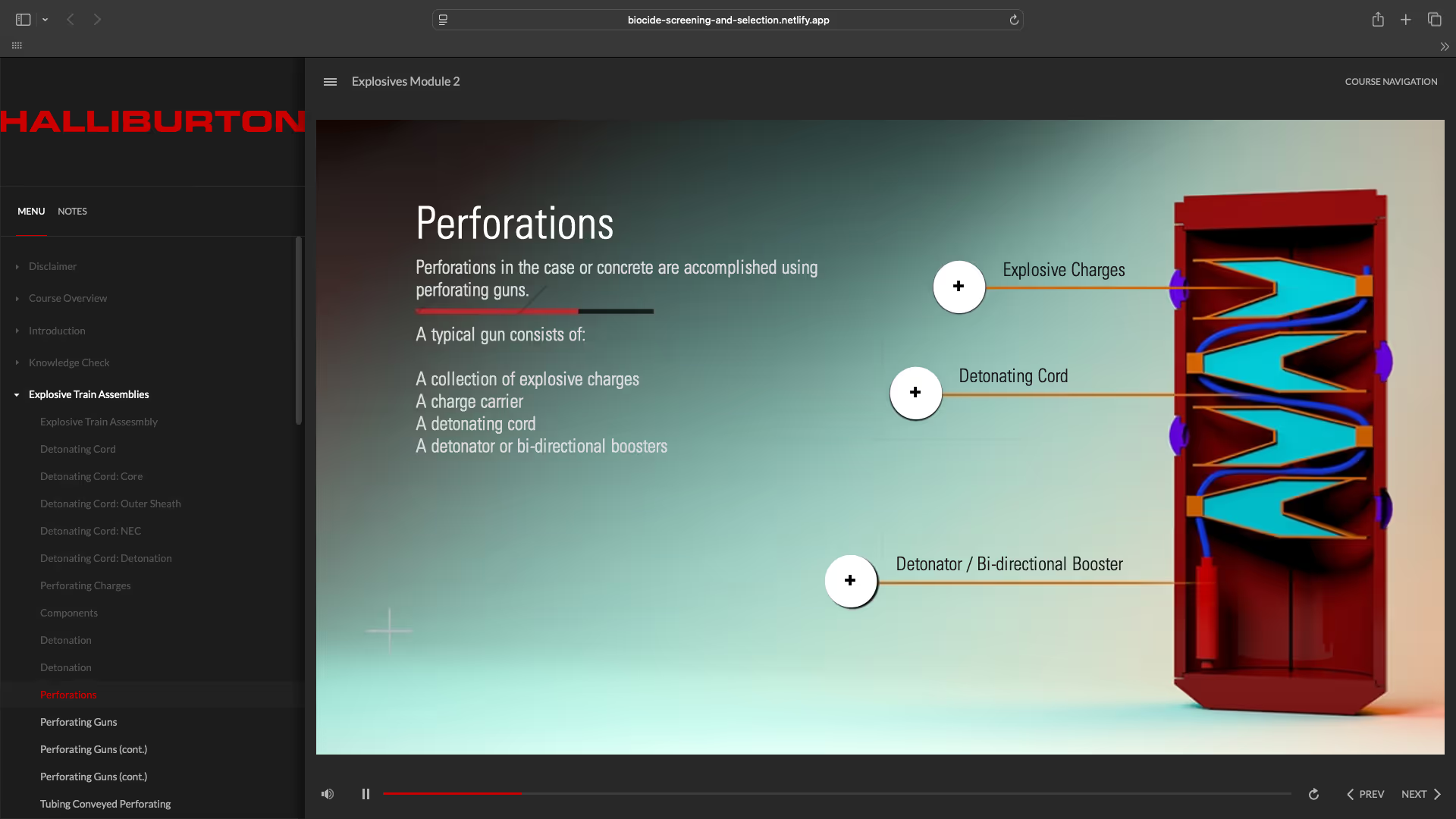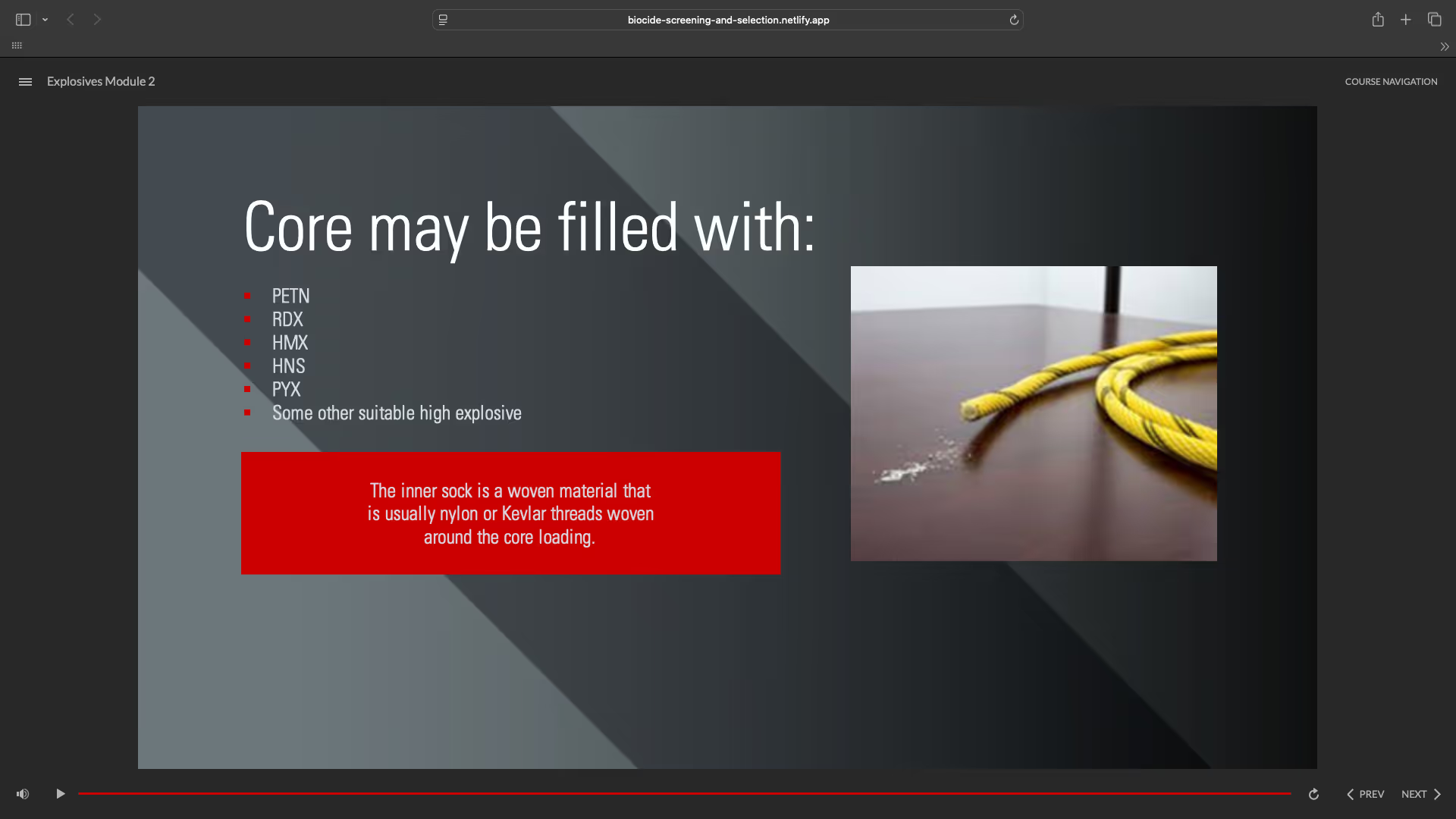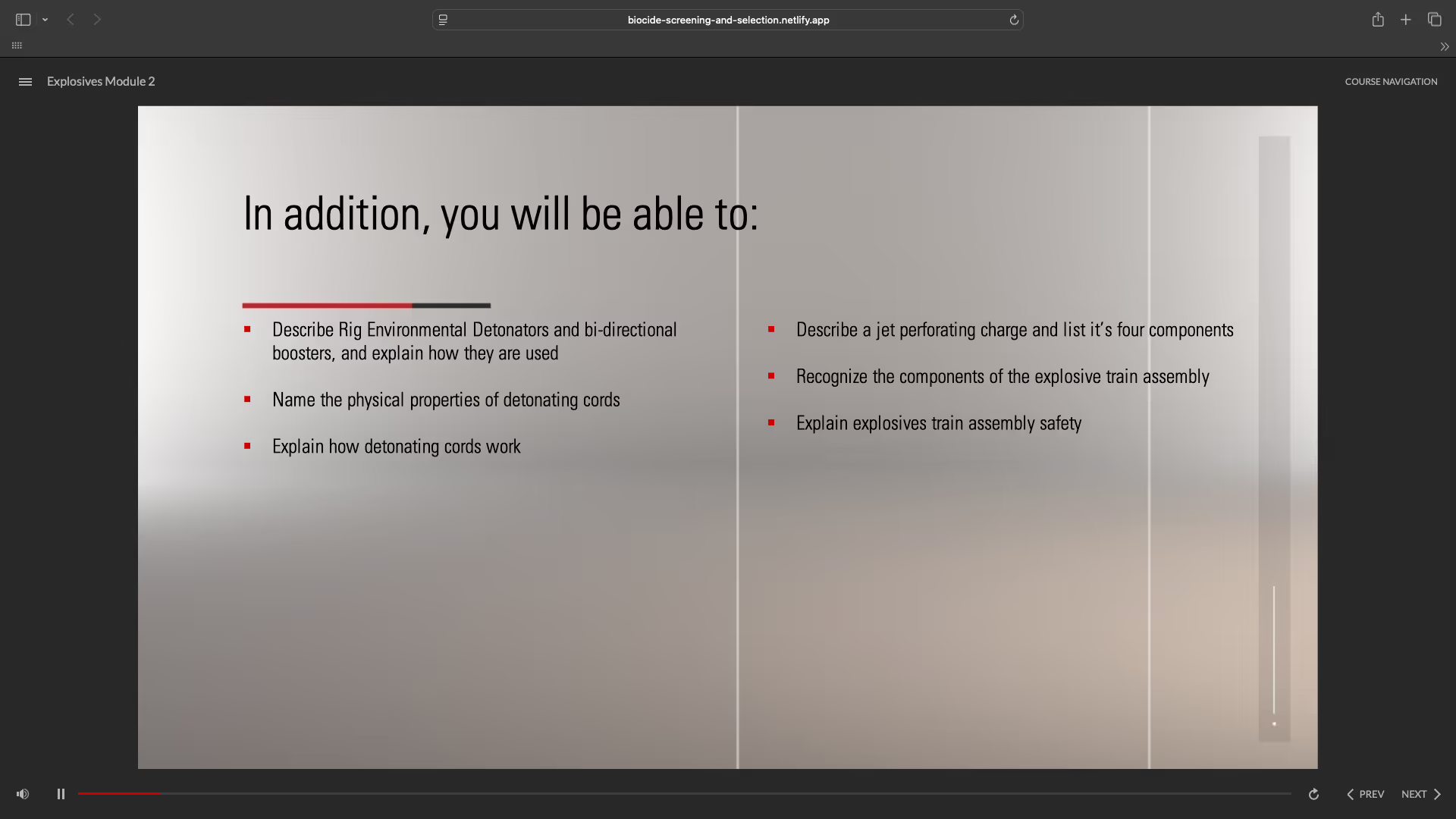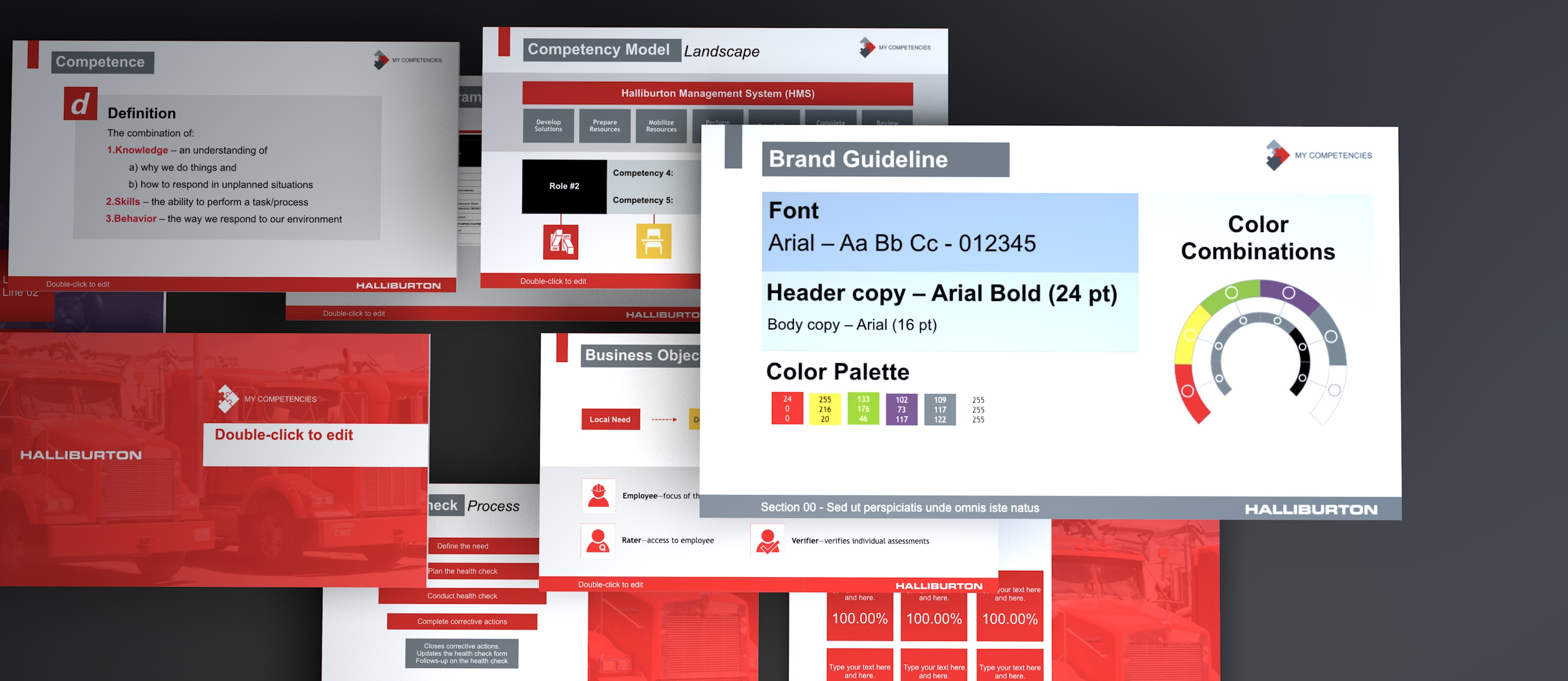Explosives
- Role
Developer, UX/UI Designer, Web Designer, Instructional Designer
- Duration
8 weeks / Completed 2019
- Tools
Articulate Storyline, Adobe Photoshop, Illustrator, Dreamweaver, ActionScript

Motion Defines Hierarchy
Spatial Depth ≠ zoom

Rhythm = hierarchy

Timing & emotion

Hero Choreography
Album Card Motion System
Playback Bar Motion
The player becomes the pulse of the scene — continuous, glowing, subtle.
Progress bar motion timed to 6s loop using ease-in-out sine curve.

Ambient Light + Depth System

Camera Motion / Vision OS Depth

Motion System Breakdown
Principles
Lorem ipsum dolor sit amet, consectetuer adipiscing elit, sed diam nonummy nibh euismod tincidunt ut laoreet dolore magna aliquam erat volupat. Ut wisi enim ad minim veniam, quis nostrud exerci
Timing Map

Applied Motion

Reel
.jpg)





1
Build Overview
2
Creative Rationale
Goal
Create a comprehensive and interactive e-learning module within 8 weeks that effectively educates users on the components, physical properties, and safety protocols of explosive train assemblies, aiming to enhance safety and compliance in operations.
Process
- Conducted a needs analysis to identify specific learning requirements and safety protocols.
- Developed the course structure using Articulate Storyline, integrating interactive elements to enhance engagement.
- Utilized Photoshop and Illustrator to create detailed visual aids that support learning.
- Integrated the course into Halliburton’s LMS using Dreamweaver and customized ActionScript for seamless functionality.
Key Highlights
Detailed Insights
Deep Dives
Learning Science
Applied cognitive learning theories to structure the content, ensuring that complex information is presented in manageable segments to facilitate understanding and retention.
2
Creative Rationale
Goal
Challenges
Process
Impact and Results
Measurable Outcomes
Takeaways
1
The brief
Goal
Create a comprehensive and interactive e-learning module within 8 weeks that effectively educates users on the components, physical properties, and safety protocols of explosive train assemblies, aiming to enhance safety and compliance in operations.
Challenges
- Managing resource limitations including budget and time constraints.
- Handling the complexity of content related to explosives, requiring precise and clear explanations to ensure safety and comprehension.
Learning Objectives
- Users will be able to identify and describe the components of explosive train assemblies.
- Users will understand the safety protocols associated with handling and storing explosive materials.
- Users will demonstrate knowledge of the physical properties of various explosive components through interactive assessments.
Learning Science
Applied cognitive learning theories to structure the content, ensuring that complex information is presented in manageable segments to facilitate understanding and retention.
Learning Methodolgy
Employed the ADDIE model (Analyze, Design, Develop, Implement, Evaluate) to guide the systematic development of the e-learning course, ensuring that educational objectives are met effectively.
Process
- Conducted a needs analysis to identify specific learning requirements and safety protocols.
- Developed the course structure using Articulate Storyline, integrating interactive elements to enhance engagement.
- Utilized Photoshop and Illustrator to create detailed visual aids that support learning.
- Integrated the course into Halliburton’s LMS using Dreamweaver and customized ActionScript for seamless functionality.
Impact and Results
The module significantly improved understanding and compliance with safety protocols related to explosives within Halliburton, enhancing operational safety and reducing risk.
Measurable Outcomes
- Achieved a completion rate of over 90% among targeted learners.
- Post-course assessments showed a 25% increase in knowledge retention compared to pre-course benchmarks.
Takeaways
- Highlighted the importance of precision in content development when dealing with hazardous materials.
- Demonstrated the effectiveness of interactive elements in enhancing learner engagement and retention in complex subjects.
Accessibility & inclusion
Ensured that the e-learning module was accessible by adhering to WCAG guidelines, incorporating features like text-to-speech, alt text for images, and keyboard navigability to support learners with disabilities.
